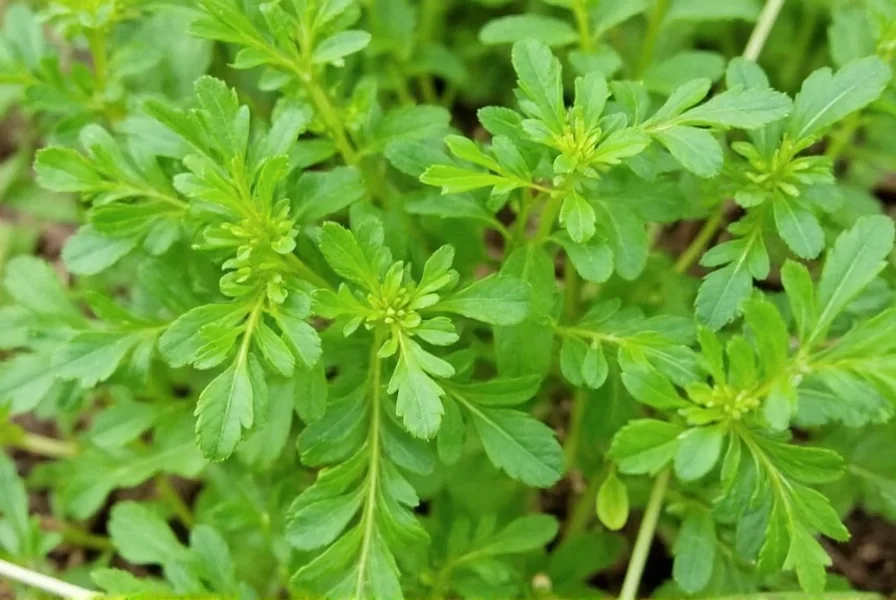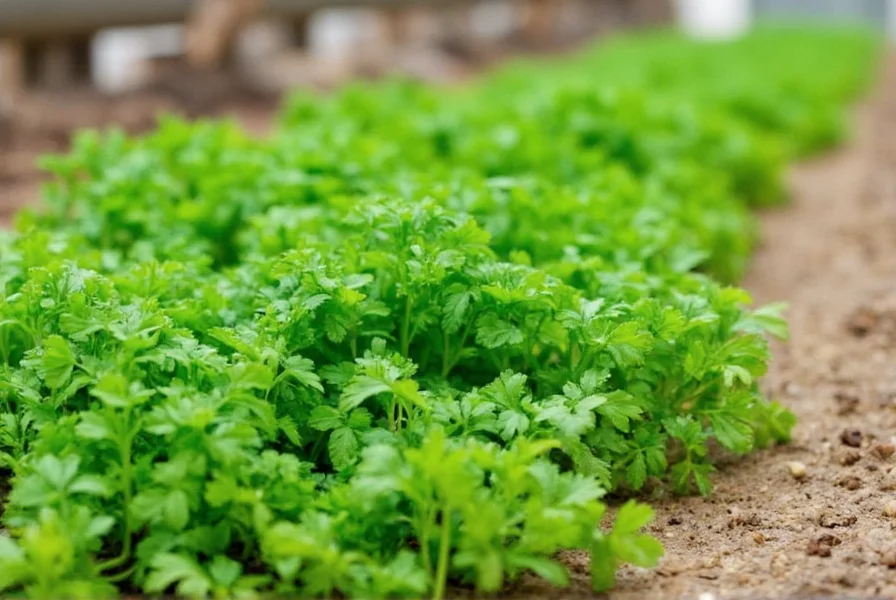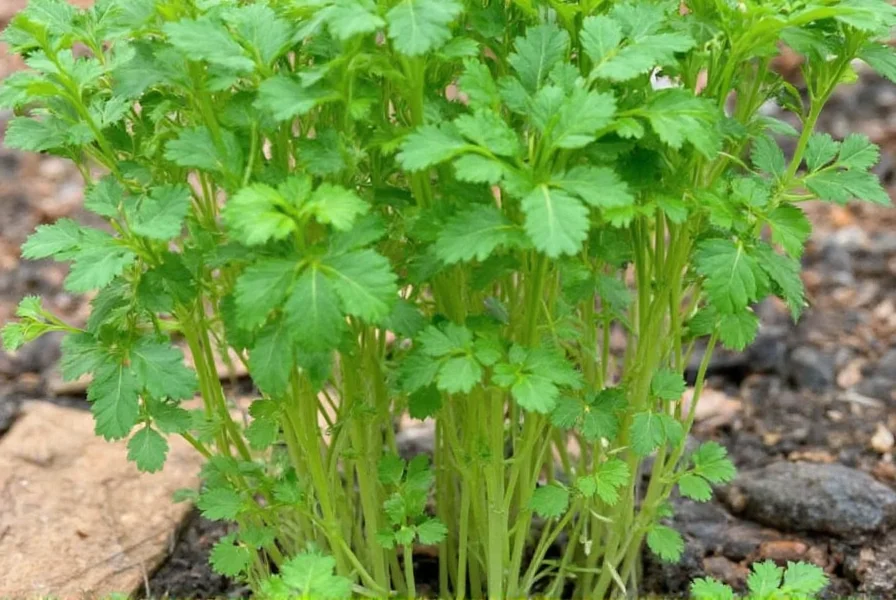Whether you're a beginner gardener or looking to perfect your herb-growing skills, understanding how to grow coriander successfully can transform your culinary experiences. This versatile herb provides fresh flavor to countless dishes but requires specific conditions to thrive. Unlike many herbs, coriander has a relatively short growing window before it bolts, making proper timing and care essential for a continuous harvest.
Understanding Coriander Basics
Before diving into cultivation techniques, it's important to clarify terminology. Coriander refers to the entire plant (Coriandrum sativum), with the leaves commonly called cilantro in American English and the seeds known as coriander seeds. This annual herb belongs to the Apiaceae family, which includes parsley, carrots, and dill.
Several varieties exist, each with slightly different characteristics:
| Variety | Characteristics | Bolting Resistance |
|---|---|---|
| Leisure | Large leaves, slow to bolt | High |
| Santo | Compact growth, excellent flavor | Moderate |
| Calypso | Uniform growth, disease resistant | Moderate |
| Moroccan | Curly leaves, intense flavor | Low |
Optimal Growing Conditions for Coriander
Coriander grows best in conditions that mimic its native Mediterranean climate. Understanding these requirements is crucial for successful cultivation, whether you're practicing container gardening with coriander or planting in garden beds.
Temperature requirements are particularly important. Coriander prefers cool weather between 50-85°F (10-29°C). When temperatures consistently exceed 85°F, coriander rapidly bolts (sends up flower stalks), causing leaves to become bitter. This explains why many gardeners struggle with growing coriander in summer months.
Light needs vary by climate. In cooler regions, coriander benefits from full sun (6+ hours daily). In warmer climates, partial shade (3-6 hours of morning sun) prevents premature bolting. When growing coriander indoors, place near a south-facing window or provide 12-14 hours of artificial light.
Soil preferences include loose, well-draining soil with a pH between 6.2-6.8. Heavy clay soils cause root rot, while sandy soils drain too quickly. Amend garden soil with 2-3 inches of compost before planting to improve structure and fertility. For container growing, use a high-quality potting mix rather than garden soil.

Planting Your Coriander Successfully
Unlike many herbs, coriander develops a taproot that doesn't transplant well. This makes direct sowing essential for best results when learning how to grow coriander from seed.
Timing your planting is critical. In most climates, plant coriander 2-4 weeks before the last expected frost for spring crops. For continuous harvest, succession plant every 2-3 weeks until temperatures consistently exceed 80°F. In fall, plant 8-10 weeks before first frost for a second harvest season.
Planting technique matters significantly. Follow these steps for optimal germination:
- Prepare soil by loosening to 8-10 inch depth and mixing in compost
- Soak seeds in water for 24 hours to speed germination (optional but recommended)
- Sow seeds 1/4 inch deep, spacing 2-3 inches apart in rows 12 inches apart
- Cover lightly with soil and water gently
- Maintain consistent moisture until germination (7-14 days)
When growing coriander indoors, use containers at least 8 inches deep with drainage holes. Fill with potting mix, plant seeds as above, and place in a cool location (60-70°F) until germination.
Essential Care Practices for Healthy Coriander
Proper care transforms average coriander plants into lush, productive specimens. These coriander care tips address the most common challenges gardeners face.
Watering requirements need careful attention. Keep soil consistently moist but never soggy. Water when the top inch of soil feels dry, typically 1-2 inches per week. During hot weather, you may need to water daily. Mulching with 1-2 inches of straw helps maintain moisture and keeps roots cool.
Fertilizing considerations are minimal for this light feeder. Mix a balanced organic fertilizer (5-5-5) into the soil at planting time. If growing in containers, apply a half-strength liquid fertilizer every 3-4 weeks. Over-fertilizing promotes leafy growth at the expense of flavor.
Preventing bolting is the biggest challenge in coriander cultivation. To delay flowering:
- Plant in partial shade during warm months
- Maintain consistent soil moisture
- Choose slow-bolting varieties like 'Leisure' or 'Slo-Bolt'
- Pinch off flower buds as soon as they appear
- Provide 1-2 inches of mulch to keep roots cool
Harvesting and Preserving Your Coriander
Knowing when and how to harvest coriander ensures maximum flavor and plant productivity. The timing differs significantly between leaf harvest (cilantro) and seed harvest (coriander seeds).
For leaf harvesting, wait until plants reach 6-8 inches tall. Harvest in the morning when essential oils are most concentrated. Use clean scissors to cut outer leaves 1-2 inches above the soil line. Never remove more than one-third of the plant at once. Regular harvesting encourages bushier growth and delays bolting.
When flowers appear and turn into seed heads, you've entered the seed harvesting phase. Allow seed heads to dry on the plant until brown. Cut entire stalks and hang upside down in a paper bag to catch falling seeds. Once completely dry, rub seed heads between your hands to separate seeds from chaff.

Troubleshooting Common Coriander Growing Problems
Even with proper care, gardeners often encounter challenges when growing coriander. Understanding these issues helps implement effective solutions.
Premature bolting remains the most frequent complaint. If your coriander bolts too quickly, consider these adjustments:
- Plant earlier in spring or later in fall when temperatures are cooler
- Provide afternoon shade during warm periods
- Water consistently to prevent drought stress
- Choose bolt-resistant varieties for summer planting
Pest management for coriander is generally straightforward. Aphids occasionally attack young plants. Control them by spraying with a strong water jet or applying insecticidal soap. Caterpillars may appear but rarely cause significant damage. Hand-pick larger pests when spotted.
Disease prevention focuses on proper watering practices. Root rot occurs in poorly draining soil. Prevent this by ensuring good drainage and avoiding overhead watering. Powdery mildew may develop in humid conditions; increase air circulation and remove affected leaves promptly.
Growing Coriander Year-Round
With strategic planning, you can enjoy fresh coriander throughout the year. Understanding seasonal considerations for growing coriander extends your harvest window significantly.
In cold climates (zones 3-7), focus on spring and fall crops. Start seeds indoors 4-6 weeks before last frost for an early harvest. Plant a second crop in late summer for fall harvest. Protect plants from early frosts with row covers.
In warm climates (zones 8-11), shift focus to cool seasons. Plant in fall for winter harvest, as summer temperatures will cause immediate bolting. Provide 30-50% shade cloth during warmer months if attempting summer growth.
For indoor growing, maintain temperatures between 60-75°F. Use a grow light providing 12-14 hours of light daily. Choose compact varieties and harvest regularly to encourage new growth. Indoor plants typically produce for 2-3 months before needing replacement.
Conclusion: Mastering Coriander Cultivation
Growing coriander successfully requires understanding its unique preferences and limitations. By planting at the right time, providing appropriate conditions, and harvesting correctly, you can enjoy fresh cilantro for cooking and coriander seeds for spice throughout much of the year. Remember that succession planting every 2-3 weeks is key to continuous harvest, and choosing bolt-resistant varieties makes summer growing more feasible. With these techniques, even novice gardeners can master the art of growing coriander and enhance their culinary creations with homegrown freshness.
Frequently Asked Questions
How long does it take for coriander to grow from seed to harvest?
Coriander typically germinates in 7-14 days and reaches harvestable size (6-8 inches tall) in 3-4 weeks. For leaf harvest (cilantro), you can begin picking outer leaves when plants have at least 4-6 sets of true leaves. The entire process from seed to first harvest takes approximately 25-30 days under optimal conditions.
Why does my coriander keep bolting too quickly?
Coriander bolts (sends up flower stalks) quickly in response to heat, drought, or long daylight hours. To prevent premature bolting: plant during cooler seasons, provide partial shade when temperatures exceed 75°F, maintain consistent soil moisture, choose slow-bolting varieties like 'Leisure', and harvest regularly to encourage leaf production rather than flowering.
Can I grow coriander indoors year-round?
Yes, you can successfully grow coriander indoors year-round with proper conditions. Use a container at least 8 inches deep with drainage holes, place in a south-facing window or provide 12-14 hours of artificial light daily, maintain temperatures between 60-75°F, and water when the top inch of soil feels dry. Indoor plants typically produce for 2-3 months before needing replacement, so practice succession planting every 3-4 weeks for continuous harvest.
How do I prevent my coriander from becoming bitter?
Coriander leaves become bitter when the plant bolts or experiences stress. To maintain flavor quality: harvest regularly before flowering begins, provide consistent moisture (avoid drought stress), grow in partial shade during warm weather, choose appropriate varieties for your climate, and never let the soil completely dry out. Harvest in the morning when essential oils are most concentrated for best flavor.
What's the difference between growing coriander for leaves versus seeds?
When growing for leaves (cilantro), focus on cool temperatures, regular harvesting, and preventing bolting. For seed production (coriander seeds), allow plants to flower and develop seed heads. Seed production requires warmer temperatures and longer days. Plants grown for seeds need less frequent harvesting and more space (12-18 inches between plants) to develop robust seed heads. The same plant can provide both leaves early in its lifecycle and seeds later, but leaf quality declines once flowering begins.











 浙公网安备
33010002000092号
浙公网安备
33010002000092号 浙B2-20120091-4
浙B2-20120091-4